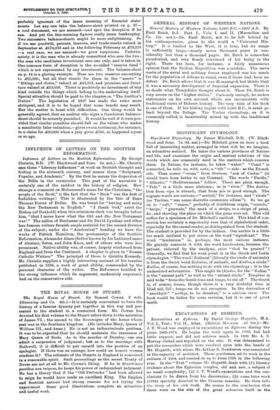THE MODERN BALANCE SHEET. probably ignorant of the inner meaning
of financial state- ments. Let any one take the balance-sheet printed on p. 37- a real document, we are assured—and spot the deception if he can. And yet the fair-seeming figures really mean bankruptcy. Two successive balance-sheets might be more enlightening. So if we see goodwill, patents, licenses, and trade-marks valued in September at 4170,233 and in the following February at £79,218 —a real case, we are assured—we grow suspicious. Unfortu- nately, it is the man who is already committed who sees the two ; the man who meditates investment sees one only, and is taken in. One common form of deception is the so-called " reserve fund " which is not represented by any investment. The balance-sheet on p. 44 is a glaring example. Here are two reserves amounting to £65,000; but all that stands for them in the "assets" is "fittings and stores," valued at £44,513, and premises and furni- ture valued at £10,058. There is positively no investment of any kind outside the things which belong to the undertaking itself. Special attention should be paid to the chapter on " The Auditor's Duties." The legislation of 1907 has made the rules more stringent, and it is to be hoped that some benefit may result. But the matter is beset with difficulties. One thing would be generally agreed, that an auditor who signs a fraudulent balance- sheet should be severely punished. It would be well if it were pro- vided that similar penalties should fall on the valuer who makes a manifestly false valuation,—gives sworn testimony, for instance, to a claim for £20,000 when a jury gives £750, as happened a year or so ago.

























































 Previous page
Previous page